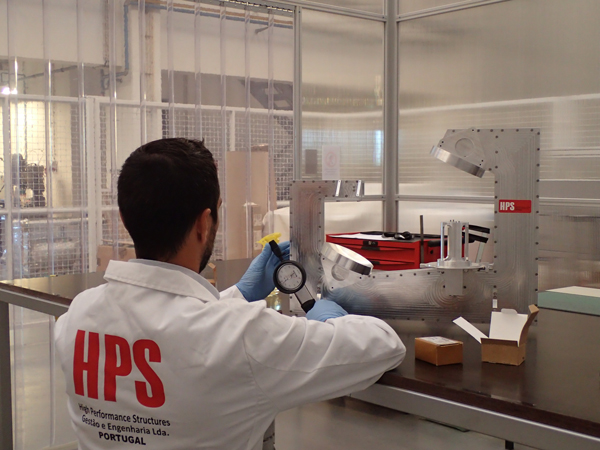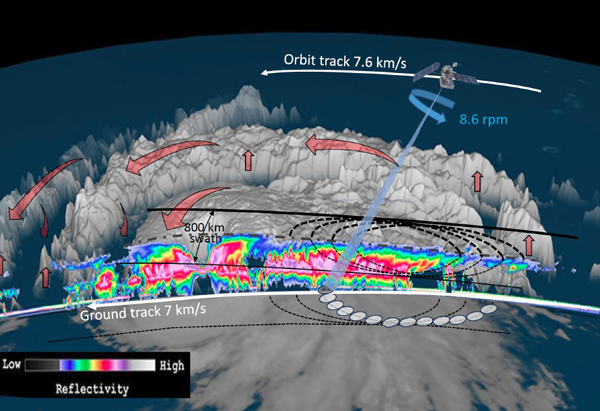Februar 2018
DORA-Spaceborne Doppler Radar Concept to drive European leadership in climate monitoring
Innovation by HPS Germany and Portugal on demand of the European Space Agency ESA
One of the most fundamental preconditions to understand climate change is the provision of reliable precision data about the behavior of factors affecting and influencing climate and weather phenomena. For meteorologists and climate researchers wind is one of those most decisive factors – however, even after more than a century of professional and scientific studies executed from positions on the ground and airborne among others one question still needs to be answered: Do winds follow the logic of a certain „structure“ underlying this phenomenon, and how can that „structure“ be described? Systematic research may well lead not only to a better theoretical understanding, but also to practical solutions towards the predictability of impacts that directly concern safety and wellbeing of humans on the ground, on the water and in the air.
The European long-term lighthouse program in space called „Copernicus“ foresees a huge number of missions dedicated to finding answers on those questions from space. One of potential future missions named “CIMR” foresees the use of a rotating 8m-deployable reflector subsystem, for which currently ESA is requesting proposals for a Phase A/B1.
Another advanced potential mission concept needs a 3m rotating shell reflector cluster subsystem measuring winds in cloudy regions with 50km horizontal and 1km vertical resolution on a swath width greater than 800 km. Before even planning a mission like that a completely new technology is needed. The pre-development has been entrusted to HPS (Germany and for the breadboarding-part, Portugal) back in 2015. Within time and budgetlines HPS successfully came up with a solution of a conically scanning Doppler radar with the following characteristics:
- Polarization diversity
- Pulse compression (for higher resolutions of targets)
- Frequency “hopping” (jumping from one frequency to another 94 GHz +/- 0,25 GHz).
The design of the new conical scanning antenna is compatible with the fairing of Europe´s lightweight-launcher VEGA. The 3m-antenna is to rotate on top of the satellites at the speed of one round every 5 seconds and all electro-magnetic waves are focused in a 2 mm diameter wave-guide entry. Most critical section of the subsystem is the subassembly of two secondary reflectors and rotating tiny feeds in W-band. Therefore ESA agreed for a breadboard concept architectured by HPS Germany, designed in detail, manufactured and assembled by HPS-Portugal and tested at DLR in Oberpfaffenhofen.
The results:
- The accuracy (around 10 µm RMS) of the free space part of the breadboard has been reached by HPS Portugal
- The proposed antenna system is fully compliant with the system requirements
- The RF tests on the breadboard have given very good results.
Cooperation among all partners, especially those involved in the breadboarding activity has been Excellent.
The whole team responsible for the latest technological breakthrough of Europe consisted of:
- HPS Germany as Prime
- Thales Alenia France as LSI for system inputs and instrument specification
- University of Leicester for the science part
- HPS Portugal for breadboard/ strcuture assembly as main subcontractor with the largest portion of the budget
- SWISSto12 for RF-parts in 3D-printing technology.
Europe´s ambitious Copernicus program constantly needs innovations and even disruptive developments to reach its goals. HPS (Germany and Portugal) has become one of the principal suppliers of technological breakthroughs on demand.



